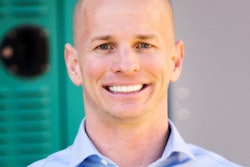
Here's a familiar scenario: Dr. Memphis owns a general dental practice, which includes one associate. Last month Dr. Memphis placed 10 crowns. His associate only placed five. Obviously, Dr. Memphis did twice as many crowns, which means he was twice as productive, right? Or do we know enough to know for sure?
Here's an analogy that illustrates the problem with trying to determine who's more productive in this practice. Imagine that last night, an NBA team scored 100 points in the game. In a separate game, another team scored 85 points. Which team won and which team lost? We don't have enough information. We need to know what the opponent scored in each game to answer the question of who won and who lost.
The same is true in this example. If we're trying to determine which dentist is more productive, we need additional information. Specifically, you need to know each dentist's diagnostic acceptance percentage.
What it means
 Curtis Marshall is the director of partner operations for Dental Intelligence.
Curtis Marshall is the director of partner operations for Dental Intelligence.Here's what diagnostic acceptance percentage means and how to measure it.
The diagnostic percentage is when a patient is diagnosed and procedures are added to the treatment planner.
Acceptance is when a procedure that was diagnosed is scheduled from that treatment planner appointment or when it is completed that same day. Patient acceptance is when a patient accepts anything that was added to their treatment planner that day (diagnosed).
Treatment acceptance is the dollars accepted versus what was presented. For example, if five procedures were added to their treatment planner totaling $1,000 and they scheduled one of those procedures for $200, that would be 20% treatment acceptance.
In the above example, Dr. Memphis and his associate both have a diagnostic acceptance percentage of 40% or more How is this possible? Dr. Memphis presented crowns to 25 patients and 10 accepted. His associate presented crowns to 12 patients and five accepted. By percentage, the associate is actually more productive than the practice owner.
Typically, dentists have measured case acceptance success by looking at completed treatment. Often, we look at the number of crowns done, for example, and assume more is better. This is why we need to go back to the diagnostic acceptance percentage. That's where the insights are really found.
Lessons from the data
What does the data teach us about becoming more efficient in treating patients without compromising the quality of care?
“Typically, dentists have measured case acceptance success by looking at completed treatment.”
One lesson that we reinforce to our clients is to track what is actually happening in the practice, including the types of treatment being providing and how much, that will tell you if adding new services or providers (or even a new location) actually makes sense.
The final lesson is that the practice needs to be looking at payment amounts presented to the patients. If one associate was presenting $1,000 in total treatment, for example, and another was presenting $2,000, it's important to go beyond the raw numbers.
What's behind the thinking and patient needs in presenting those two treatment plans? Is the first associate presenting only basic treatment that the patient asked for and was more likely to accept? Remember the main goal is for your patients to receive needed care. Everyone in the practice needs to help the patient know what needs to be done; the final decision is up to them.
After reviewing the data, Dr. Memphis realized he needed to make some improvements in how he was presenting treatment and following up on that presented treatment. In contrast, his associate just needed more patients to treat because even though they were working the same hours, they weren't seeing the same volume of patients.
Curtis Marshall is the director of partner operations for Dental Intelligence.
The comments and observations expressed herein do not necessarily reflect the opinions of DrBicuspid.com, nor should they be construed as an endorsement or admonishment of any particular idea, vendor, or organization.



















